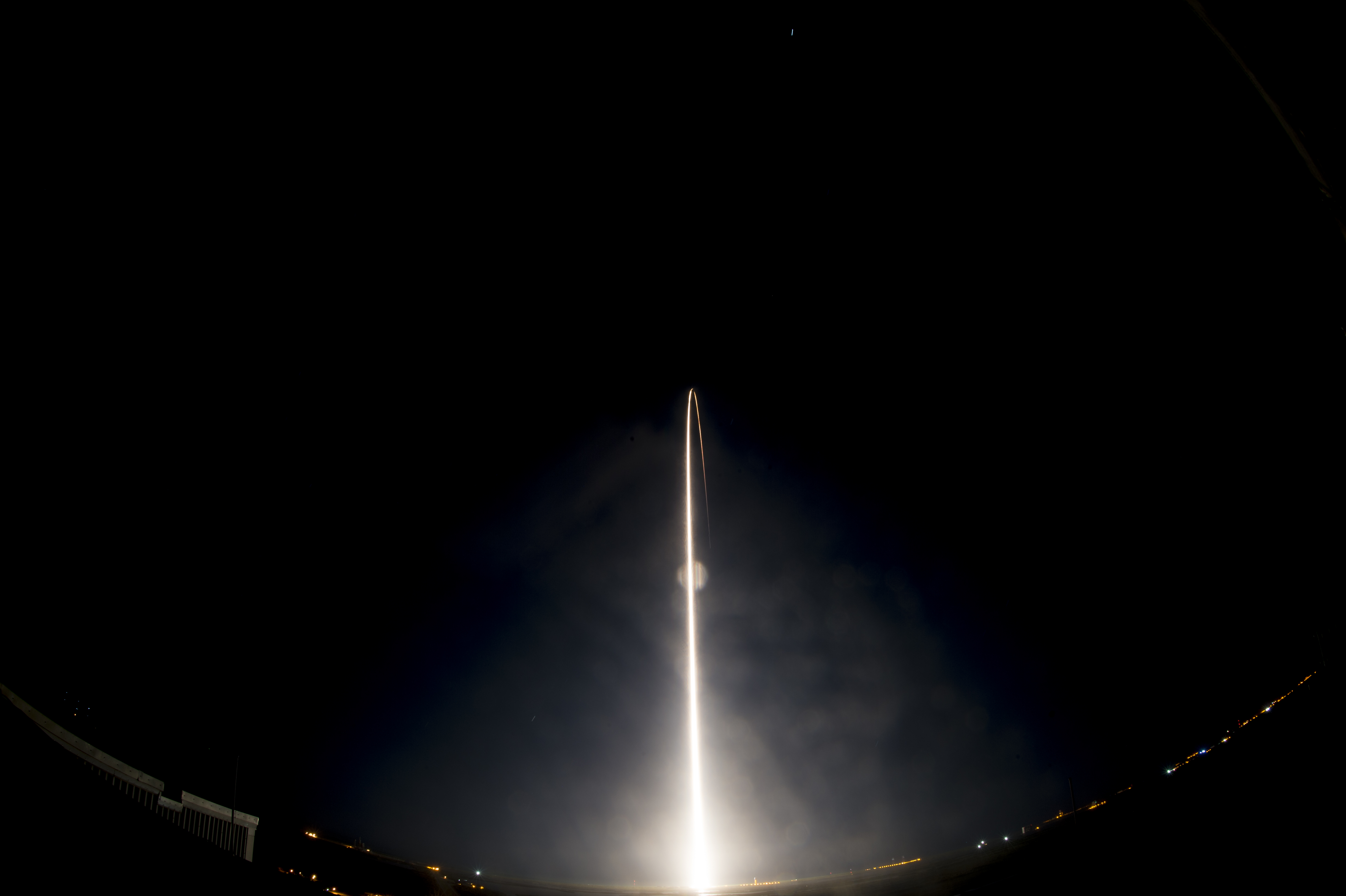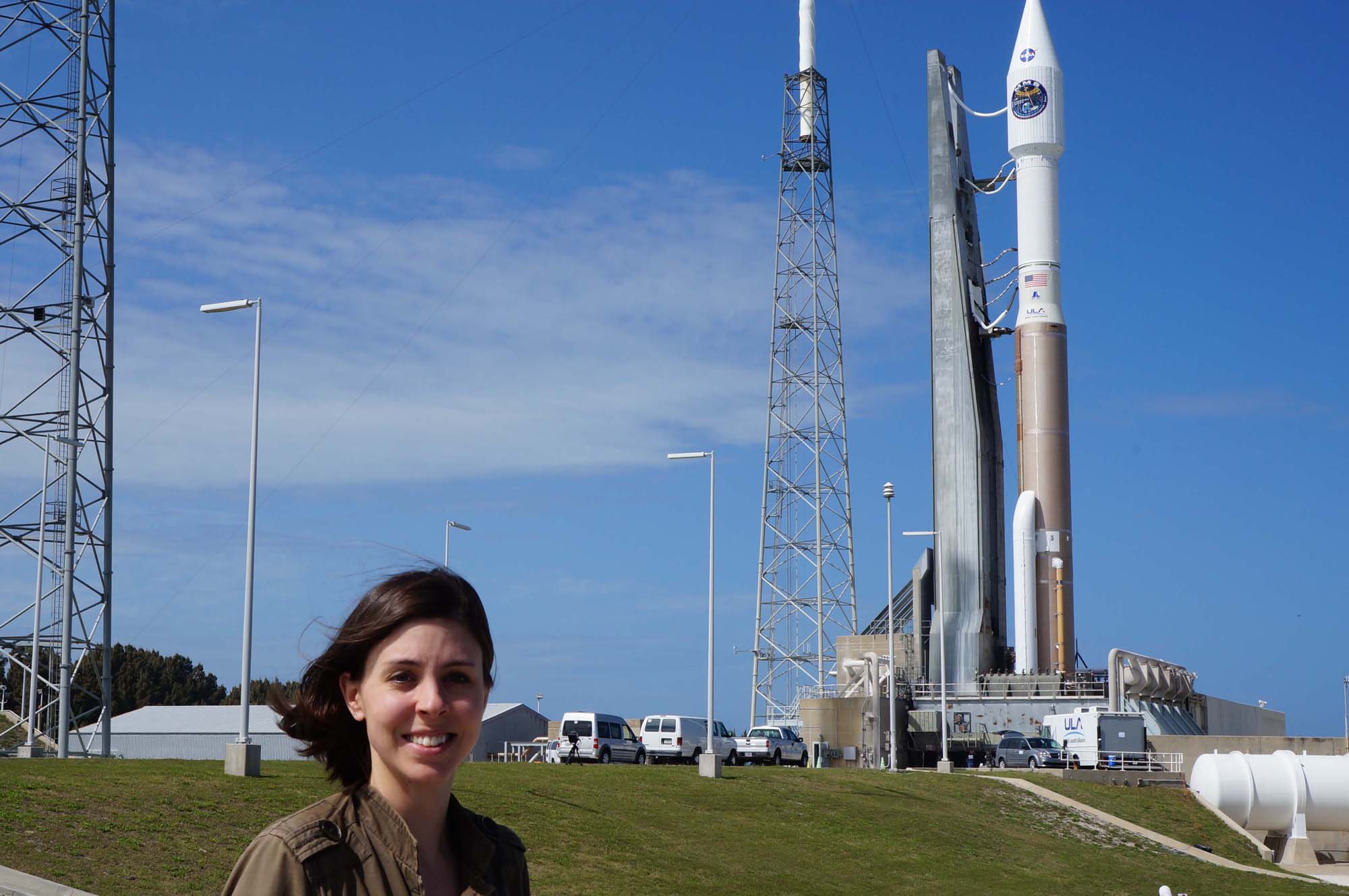Rocket Launch Is a Blast for First-Timer

On Thursday night, for the first time in my life, I got to watch a multi-ton rocket — literally a well-engineered bomb, to which some very smart people strapped a billion dollar science experiment — claw its way through the atmosphere with such force that it countered the pull of Earth's gravity and reached the region called outer space. It was amazing.
The launch took place right on schedule at 10:44 p.m. EDT on Thursday, March 12 (0244 March 13 GMT), from Cape Canaveral Air Force Station, sending NASA's Magnetospheric Multiscale mission on its way into space. When the main rocket and the two boosters strapped to either side of that rocket ignited, the flare was so bright it looked like daylight. Where I stood, 3 miles (4.8 kilometers) away, everything was illuminated as if it were high noon.
I have covered space science (though not space flight) for years, and so much of what I absorb comes in a digital format: like photographs and data sets sent back from space. But seeing a rocket launch is a reminder that at the heart of modern space-based science lies a purely analogue problem: how to generate enough brute physical force to counter the pull of gravity. [See more amazing launch photos of NASA's MMS mission]
On the afternoon before the launch I tried to take a short nap, but I found myself looking at the clock and counting down the minutes until I had to leave. Ahead of schedule, I traveled to the Kennedy Space Center press building, my temporary office for the last two and a half days of press conferences and lead-up events. The room gradually filled up with about 40 or 50 other journalists, space photographers and guests of the NASA Social program, who had come to watch the launch.
The mission was doubly exciting for me because of the science that was on board. On top of the Atlas V rocket set to launch that night was a payload fairing (a protective shell for the ride up) carrying four satellites that make up the Magnetospheric Multiscale mission (MMS). The four satellites will orbit together around the Earth in a pyramid shape and try to study a phenomenon called magnetic reconnection.
On Earth, magnetic reconnection occurs all the time with no disastrous consequences: It's what happens when you put two magnets together and they stick. But in many other places in the universe, including the space far above Earth's atmosphere and in the sun, there's the added ingredient of plasma, or charged gas. In that scenario, magnetic reconnection can transform magnetic energy into kinetic energy and accelerate the plasma particles to nearly the speed of light.
This process is responsible for solar flares and coronal mass ejections on the sun, and for auroras and geomagnetic storms near the Earth. It affects people here on Earth, but it is also a universal process, and scientists don't understand how it happens. MMS is designed to find out. It aims to provide an answer to a fundamental physics question, and that, to me, is poetry.
Breaking space news, the latest updates on rocket launches, skywatching events and more!
Poetry strapped to a few thousand pounds of rocket fuel. Before the launch, I talked to MMS project scientist John Durelli from NASA's Goddard Space Flight Center, and he told me he and his colleagues were using the term "euphora-terror" to describe how they felt.
Anyone who follows spaceflight knows that launches get delayed and cancelled all the time. My flight home was scheduled for the next morning, and I knew I couldn't stay an extra day if the rocket got pushed to Friday night. This was my only shot, but there was a nagging feeling in the back of my mind that there was no way I'd be that lucky.
Sometimes, though, even with an event as complicated as spaceflight, things go exactly as they should. At precisely the scheduled time, I watched the Atlas V rocket light up the sky, heading straight up and then bending eastward. The fires of the engine grew smaller until they blended in with the starry night sky, and then we saw them disappear at the end of the first stage. Back in the press center, we watched as the rocket flawlessly put the four MMS satellites into orbit.
The most exhilarating part of the light and sound show was over in less than a minute, and the rocket gone from view in under five minutes. Months and years of work and thought go into every rocket launch, not to mention what goes into the payloads the rockets carry. But if there is any physical event that can adequately represent those tremendous undertakings, it's a rocket exploding off the launch pad and inching its way to outer space. I will definitely be attending another launch.
Follow Calla Cofield @callacofield. Follow us @Spacedotcom, Facebook and Google+. Original article on Space.com.

Calla Cofield joined Space.com's crew in October 2014. She enjoys writing about black holes, exploding stars, ripples in space-time, science in comic books, and all the mysteries of the cosmos. Prior to joining Space.com Calla worked as a freelance writer, with her work appearing in APS News, Symmetry magazine, Scientific American, Nature News, Physics World, and others. From 2010 to 2014 she was a producer for The Physics Central Podcast. Previously, Calla worked at the American Museum of Natural History in New York City (hands down the best office building ever) and SLAC National Accelerator Laboratory in California. Calla studied physics at the University of Massachusetts, Amherst and is originally from Sandy, Utah. In 2018, Calla left Space.com to join NASA's Jet Propulsion Laboratory media team where she oversees astronomy, physics, exoplanets and the Cold Atom Lab mission. She has been underground at three of the largest particle accelerators in the world and would really like to know what the heck dark matter is. Contact Calla via: E-Mail – Twitter

